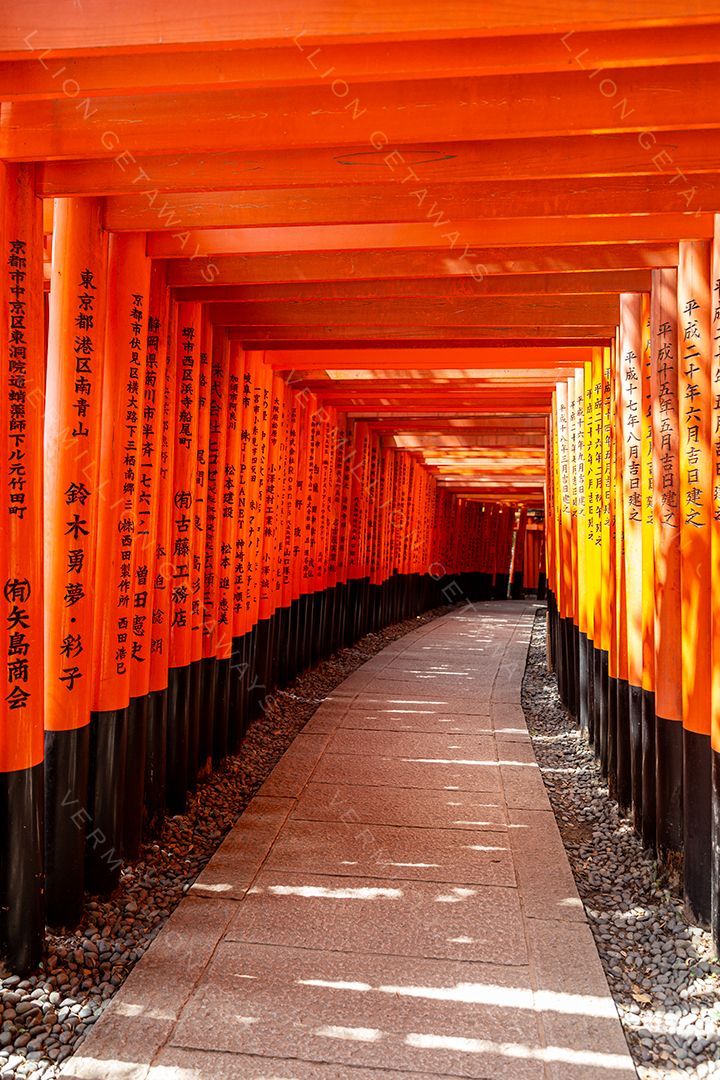Japan
Japan is a remarkable country that offers a captivating blend of ancient traditions and modernity. Visitors can experience the vibrant energy of the megacity of Tokyo, the rich cultural heritage of Kyoto and Nara, or indulge in the culinary delights of fresh sushi and ramen. Whether you're soaking in an onsen (hot spring), hiking through majestic mountains, or immersing yourself in Japanese festivals’ colorful sights and sounds, Japan promises an unforgettable adventure for every traveler.
Tokyo
Tokyo, Japan's bustling capital, offers an incredible array of tourist attractions that blend the ultramodern with rich historical traditions. Some notable sites to visit within the city include Shinjuku Gyoen National Garden, a beautiful park featuring traditional Japanese, English, and French gardens; Meiji Shrine, nestled in a forested area of the city, is a Shinto shrine dedicated to Emperor Meiji and Empress Shoken, providing a serene escape from urban life; Harajuku, located just outside the Meiji Shrine, boasts boutiques, cafes, and street food, and is renowned for its youthful culture, fashion, and eccentric styles; Senso-ji Temple in Asakusa is Tokyo's oldest Buddhist temple and an important cultural landmark. The surrounding Nakamise Street is lined with shops offering traditional snacks and souvenirs; Akihabara, known as the center of otaku culture, is a paradise for anime, manga, and technology enthusiasts, featuring countless shops and themed cafes; Tsukiji Outer Market remains a bustling hub for fresh seafood, produce, and culinary tools.
Day-trips From Tokyo
Several culturally and historically significant places near Tokyo provide excellent day-trip options when visiting the city. About two hours from Tokyo, Nikko is a UNESCO World Heritage site featuring stunning shrines and natural beauty, including the famous Toshogu Shrine. Kamakura, a former feudal political center, is a coastal town rich in history and is renowned for the Great Buddha and beautiful temples such as Hase-dera. Its sandy beaches and hiking trails offer plenty of outdoor activities. Hakone is known for its hot springs, scenic views of Mount Fuji, and the Hakone Open-Air Museum, making this area perfect for a relaxing getaway. Yokohama, just a short train ride from Tokyo, boasts a lovely waterfront and the iconic Chinatown. The Fuji Five Lakes, located at the base of Mount Fuji, provide breathtaking views and numerous outdoor activities, along with access to lakes and recreation spots ideal for picnicking and hiking.
Kyoto
As the former capital of Japan, Kyoto is renowned for its well-preserved historical sites. The city is home to over 1,600 temples and shrines. Some of the key sites would include the Kyoto Imperial Palace, which originally dates back to the 8th century; the iconic Kinkaku-ji (the Golden Pavilion), famous for its stunning gold leaf exterior and serene gardens; the Fushimi Inari Taisha, known for its thousands of vibrant red Torii gates that lead up the sacred Mount Inari; the Arashiyama Bamboo Grove, which offers a magical experience of walking through towering bamboo stalks; the Kiyomizu-Dera, a Buddhist temple halfway up Mount Otawa gives a stunning view of the city and a very popular shopping street leading up to it selling snacks and souvenirs; and the Gion district where one can spot geisha and experience traditional tea houses.
Nara
Just a short trip from Kyoto, Nara holds immense historical significance. The Todai-ji Temple, which houses a giant bronze Buddha statue, is a UNESCO World Heritage site. Meanwhile, the Kasuga-Taisha Shrine features beautiful lanterns, and the Naramachi district showcases traditional merchant houses, all contributing to Nara's appeal.
Hiroshima
Known for its somber history, Hiroshima is home to the Hiroshima Peace Memorial Park, dedicated to the victims of the atomic bomb in 1945. The park features the iconic Atomic Bomb Dome, a poignant reminder of the city's past. Miyajima Island is a short ferry ride away. It is famous for the floating torii gate of Itsukushima Shrine, one of Japan's most photographed landmarks. The island offers hiking opportunities and stunning views from Mount Misen.
Kyushu
Kyushu, the southernmost of Japan's four main islands, blends natural beauty, rich history, and vibrant culture. The island is home to active volcanoes, including the iconic Mount Aso and the currently active Sakurajima outside Kagoshima. The Beppu and Yufuin areas are famous for their therapeutic hot springs. The island is also home to historic sites like Nagasaki, known for its unique blend of Japanese and Western influences, and Fukuoka, famous for its delicious ramen and bustling street food scene. The old Dutch trading post of Dejima, a small man-made island, which was the only place a limited number of Westerners were allowed to land and stay during the isolationist years of Tokugawa Shogunate, is now part of Nagasaki.
Hokkaidō
Hokkaido, Japan's northernmost island, is a destination renowned for its stunning natural landscapes and rich cultural experiences. The snow-capped mountains and pristine lakes of Daisetsuzan National Park, the hot springs of Noboribetsu, and the vibrant flower fields of Furano offer a diverse range of outdoor activities throughout the seasons. In summer, various hiking trails across the island cater to different skill levels. It transforms into a ski paradise in winter, attracting snow enthusiasts with its world-class resorts and powdery slopes in Niseko. The island is also famous for its delicious cuisine, which features fresh seafood, dairy products, and unique local specialties.
Okinawa
Okinawa is an enchanting tropical paradise famous for its rich culture, beautiful beaches, and vibrant coral reefs. Located approximately 750 km southwest of the Japanese main islands in the East China Sea, Okinawa’s sub-tropical climate, lush landscapes, and the welcoming spirit of Ryukyuan culture provide an experience of the tranquility of island life. Visitors can relax on sun-kissed shores, explore historical sites, and enjoy the unique blend of Japanese and indigenous cultures through traditional music, dance, and cuisine. Additionally, the chain of islands offers some of the clearest waters in the world, making it a popular destination for snorkeling and diving.
Yakushima
Nestled in the Pacific Ocean, Yakushima- just a two-hour jetfoil ride from Kagoshima- is a UNESCO World Heritage site and a mesmerizing island. It is renowned for its cedar trees (Yakusugi or Jōmon Sugi), some over a thousand years old. Its hiking trails meander through lush, green, moss-carpeted rainforests, stunning mountains, and unique wildlife. The serene beaches offer a great way to relax after a rewarding hike, making it a perfect blend of adventure and tranquility. Additionally, Yakushima is home to seasonal loggerhead turtle nesting grounds.
When to Visit
Japan is a year-round destination, as there is always something happening. However, spring and autumn are the peak tourist seasons. Spring in Japan is marked by the stunning sakura (cherry blossoms ) that bloom from late March to early April, transforming parks and riversides into beautiful landscapes. People celebrate hanami (flower viewing) with picnics under the trees and enjoy seasonal treats like sakura mochi and matcha sweets. Summer brings soaring temperatures and lively matsuris (festivals) featuring colorful floats, parades, and spectacular hanabi (fireworks) from June to August. Outdoor activities such as hiking in the Japanese Alps and enjoying the beaches in Okinawa are popular. Mt. Fuji's climbing season attracts many who seek a breathtaking sunrise view from its summit. Autumn showcases vibrant fall colors as maple and ginkgo leaves turn red, orange, and yellow. Popular spots for momijigari (leaf-peeping) include Kyoto, Nikko, and Nara, along with seasonal treats like chestnuts and sweet potatoes. Winter creates a magical atmosphere, especially in snowy regions like the Japanese Alps and Hokkaido, where skiing and onsen (hot springs) are popular. The Sapporo Snow Festival features impressive ice sculptures, and the Oshogatsu (New Year) is celebrated with family gatherings and traditional meals.
Outdoor
Japan is an excellent destination for active and adventure travel, catering to all skill levels and interests. The Japanese Alps are famous for their breathtaking views and hiking trails. Hiking is a favorite summer pastime, even for the Japanese. Winter brings avid skiers and snowboarders to the slopes of Niseko and Hakuba. The Okinawa and Shonan coasts offer excellent conditions for water sports, and Okinawa’s coral reefs offer vibrant marine life for divers to explore.
Culinary
The culinary experience in Japan is a feast for the senses and a deep dive into the country's rich food culture. Whether you choose a quick grab-and-go from a local Seven-Eleven (known as
Konbini), a bento box from the train station, local specialties in
Izakayas, or an exquisite
kaiseki (multi-course) dinner, which is artfully presented, no matter where or what you eat, you will be amazed by the quality and attention to detail. Beyond just eating, exploring Japan's culinary scene can include visiting sake breweries and whiskey distilleries or even taking part in a cooking workshop to bring a taste of Japan back home.
Tip: For the freshest sushi and sashimi, drop into one of the restaurants around Tokyo Fish Market early in the morning.
Retail Therapy
Shopping in Japan is a unique experience, blending traditional and modern products. Almost every prefecture (state) in the country has something special manufactured only there. All major cities boast various shopping districts, each with its charm. In Tokyo, Shibuya and Harajuku are for trendy fashion, unique boutiques, and vibrant street styles. Ginza is the go-to for luxury brands and high-end shopping. Akihabara is for electronics and anime enthusiasts, where you’ll find countless shops dedicated to manga, gadgets, and collectibles. Many stores offer tax-free shopping for tourists, so keep your passport handy.
Japanese Pottery
Almost all 47 prefectures in the country make their unique ceramic ware using locally available raw materials. Some of the families that make them go back multiple generations. Centuries. They are named according to their place of origin. Depending on how much you are into it, you could pick up a wide variety of products in department stores or dedicated shopping districts like Kappabashi (a.k.a. Kitchen Town) in Tokyo. You could also visit the actual kilns and possibly meet the master potters if you are traveling deeper into the country.
Japanese Knives
While everyone is familiar with the Japanese katana (samurai sword), Japanese knives are also renowned worldwide among professional chefs and enthusiasts. The country has a tradition of exceptional craftsmanship in making knives that are famous for their remarkable sharpness and precision. You can pick them up in department stores or in specialized knife shops in all major cities.
Tip: Tokyo’s Kappabashi has an impressive selection.
Love the Stationery
Anyone who goes to a Japanese stationery store will unlikely come out empty-handed. The variety, unique designs, and functionality are just mind-blowing. It is virtually a hobbyist’s candy store with a variety of pens, markers, brushes, seals, and more. The products reflect traditional and modern Japanese aesthetics and are practical at the same time.
Tip: Visit a Tokyu Hands in any of the major cities.
Travel Options
Japan offers a variety of exploration options, making it quite flexible for designing a custom itinerary. Thanks to the extensive network and frequency of the Bullet Train, you can travel 500 miles from Tokyo to Hiroshima, visit the Atomic Bomb Museum and the Peace Park, and return to Tokyo by bedtime. You can also cover the main sights in Kyoto and Nara over a weekend and return to Tokyo for the workweek. Thus, the flexibility is endless. Of course, Japan being an island, several cruise lines also operate ship-based tours covering significant destinations.






